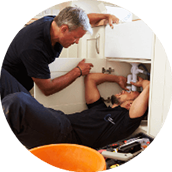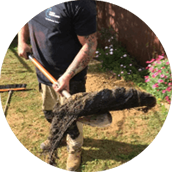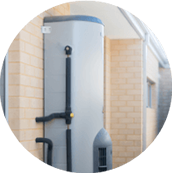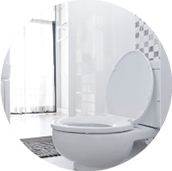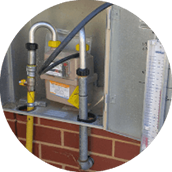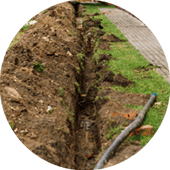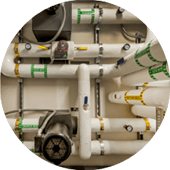Stormwater drains and sewage systems both transport water and other items away from a property. The stormwater system focuses on transferring rainwater that would normally run on surfaces away correctly. Sewage systems are there to transport sewage from the building out into sewage plants. Here at Optimised Plumbing Services our Emergency Plumber team is here to work with sewer and stormwater pipes at any time.
The main difference between sewer and stormwater drains are what flows through them. Sewer systems will transfer sewage and waste while stormwater drains are there to have rainwater flow through them. Private property owners will be responsible to repair, install and manage both sewage and stormwater drainage in their property. Local councils and Sydney Water will be responsible for sewage and stormwater management.
What are Stormwater Drains?
Stormwater is water that flows after it has rained on surfaces. The storm water will hit roofs, footpaths and roads and will most times enter the street gutters that local governments and councils govern. When the drainage system is located in private property it aims to remove the water from the place and into local water catchments owned by local councils and Sydney Water.
The stormwater drainage systems will mostly include:
Gutters
A gutter is a part of the stormwater drainage system to catch rainwater and transfer it away from the building. They mostly run on the roofs on the outside of buildings where the roof will divert the water to the gutters. It is important that the gutters are not blocked so they can properly remove rainwater from the foundations of the building.
To know how to correctly and effectively clear a blocked gutter we highly encourage you to follow our blog.
Downpipes
Downpipes connect to the gutters and will direct the water caught by the gutters into stormwater pits and drains. They are mostly positioned vertically so the water can fall directly into the next sections of the stormwater drainage system. The end of the downpipe will be pointed directly to the drain or pit and will help limit splashing and water entering the building.
Pits
Stormwater pits are where water is collected and stored for a short amount of time before entering pipes. It allows runoff water to be collected and helps keep the stormwater drains from flooding or overflowing. They will not store water for a long period of time but will help with a steady water flow. They are often made of precast concrete with a crate to prevent leaves and debris from entering them.
Drains and Pipes
After the water has been collected from the building and directed away it will be diverted to the local councils’ catchment or similar water collection system. In public spaces, such as footpaths, a street gutter will be how the water is gathered to the water collection systems. Drains and pipes will smoothly transport the water and help prevent water flooding.
Who is Responsible for Stormwater Drains?
When the stormwater drains are located on public lands, such as parks or roads, then the local council will be responsible for them. If private property pays for council rates or any other type of place such as public housing then they will also be responsible for the stormwater drains. Any land or property that is owned privately then they will be responsible for maintaining, repairing and installing stormwater drains.
What is the Difference Between Sewerage and Stormwater Systems?
Below is a guide on the main differences between sewer and storm water drains:
| Sewerage Systems | Stormwater Systems | |
| What flows through them | These systems will contain waste and sewage | These systems will transfer rainwater |
| Where are they located | Bathroom, shower, kitchen, laundry and most places inside the home. The sewage pipes will come from the inside of the house and be transported to the local sewage plant. | On the exterior of a building, including along the bottom of the roof and side of the house. The rainwater will be guided into the systems and the water will flow into local water storage. |
| Main plumbing involved | Inspection openings, trap water seals, disconnector traps, sewer pipes, drains and other plumbing designs | Gutters, downpipes, pits, pipes and drains |
| Water treatment | As sewage contains waste from the home or building it will need to be treated before the water is brought into natural water systems. | Stormwater is mostly not treated when entering the catchments and other water storage plants. The water will flow into the sea or other natural waterways as soon it has been collected. |
Reliable Stormwater Drain Services
Optimised Plumbing Services is here to help any Sydney local with stormwater drain services at any time. Our experienced plumbers will repair and install any stormwater drainage systems on any property. We will also be able to clear any blocked stormwater drains through our professional Blocked Drain team.
From the Northern Beaches to Greater Western Sydney, our stormwater drain services are offered to every person. Each task will be carried out safely to ensure water can properly exist properties when it rains. For trusted and reliable stormwater drain experts and services – contact Optimised Plumbing Services on 02 8074 1475!


